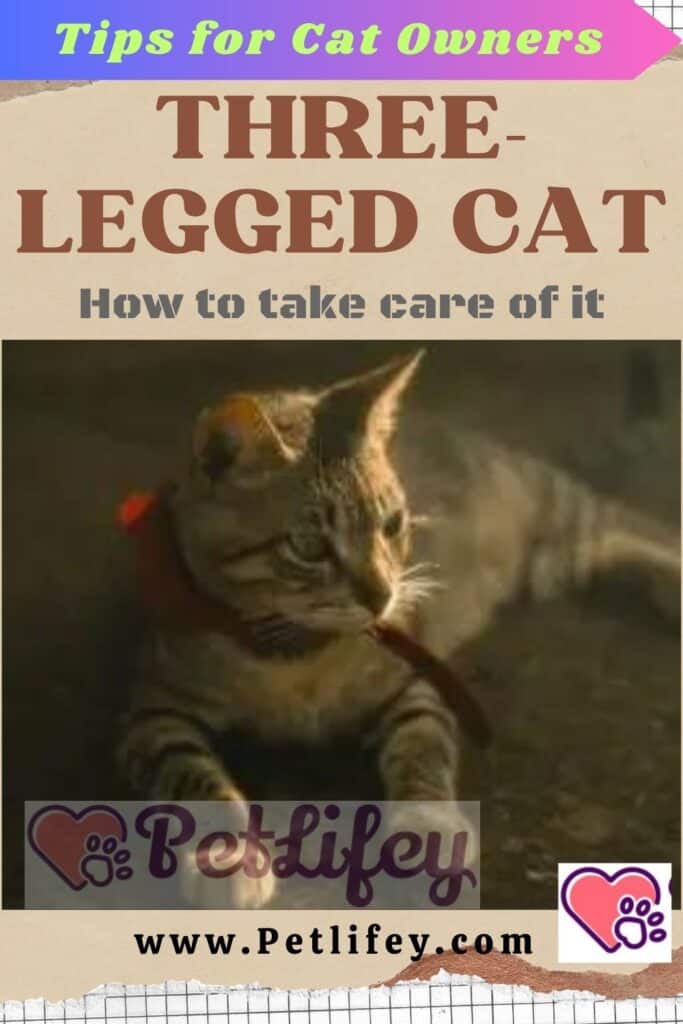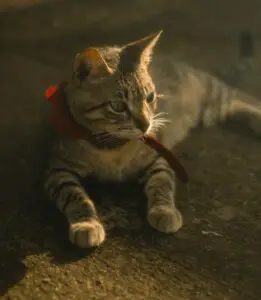
Adopting a three-legged cat can be frightening, but in reality the tripod cat does not require such different care from all other cats: let’s find out together how to care for it.
The stories of cats amputated following an accident or trauma, but also of kittens born with one less paw are much more frequent than one might think: often, unfortunately, it is feared that a three-legged cat is not able to live a normal life, but the truth is that a tripod cat can be just as happy as any other cat if cared for with the love it needs.
In this article, we will find out what specific needs and care a three-legged cat needs and how to deal with the eventuality that the vet is forced to recommend an amputation for our pet cat.
The three-legged cat: everything you should know
Taking care of a tripod cat is not so different from what is usually done with a cat on all fours: unfortunately, people think that these cats have special needs and avoid adopting them for fear of finding themselves having to look after a considered cat. “too demanding”.
The truth is that even with only three legs the cat can learn to live its life in an absolutely normal way: the tripod cat runs, jumps, climbs exactly like any other cat and often amputation, however frightening it may be, represents the best option to give your cat the opportunity to live a happy and healthy life.
Causes of amputation in the cat
The decision to amputate a cat’s paw is never easy: however, it is important to know that the vet comes to propose this drastic solution only after carefully evaluating the actual health conditions of the cat and all other possible alternatives.
Usually, amputation is recommended in cats suffering from cancer (usually an osteosarcoma) or following an accident that has irreparably damaged the animal’s limb. In some cases, the cause behind an amputation can also be a defect of a congenital nature.
Usually, the amputation of a foreleg is done by removing the entire limb together with the shoulder blade: this type of operation gives the three-legged cat a great deal of ease of movement.
If the amputation involves a hind leg, it can be done in the middle of the femur or with the removal of the entire leg: usually, unless serious damage is already in progress, the first type of surgery is carried out, which is less invasive.
What to do if your cat has an amputation
As already mentioned in this article and in our in-depth study dedicated to the care of the three-legged dog, any conscientious veterinarian is very careful to evaluate any possible option before proposing an amputation.
Obviously it is natural to have a first reaction of fear, sorrow and concern: however, our domestic cats are animals of rare intelligence, as well as of great strength and determination and will be able to adapt surprisingly quickly to their new condition as a tripod cat.
If your cat has to undergo an operation of this type, it is essential that you know what you will encounter in order to be able to take care of the cat in the post-operative way in an effective and useful way for its full recovery: continue reading to find lots of useful information , but above all do not hesitate to ask your veterinarian for all the answers you need.
Caring for a tripod cat

The convalescence of a three-legged cat after amputation surgery must be followed carefully right from the start: sometimes, cats return home scared and tend to move little, so the first days after returning can be particularly difficult both for the cat and for the master.
It may happen that the cat tends to neglect its daily cleaning routine and ends up needing help, or the cat may stop purring: the possibilities are many and they are different for each specimen, but there are some general tips that they are usually useful to everyone.
In the first days, the cat tends to hide: domestic cats have a habit of doing this when they are not feeling in perfect shape, and this is absolutely normal and can also happen to cats that are normally affectionate, sociable and playful. It will take some time for everything to return to normal, so just be patient.
Care must be taken to strictly follow the veterinarian’s instructions on medications: sometimes it can be difficult to give medicines to the cat, but with the right advice you can manage to do this too.
In addition, it is important to organize the spaces in the house in such a way as to offer the cat rugs, cushions and other soft surfaces that they can reach easily.
Also pay attention to the litter box: in a first phase, it can be difficult for the three-legged cat to use it to do the needs. It must be placed in an easily accessible place and let the cat understand with a lot of patience and love that they can trust us and our help even in this “intimate” situation.
Once the convalescence phase is over, it is important to take care of the tripod cat especially on two fronts: physical exercise and proper nutrition.
A three-legged cat, in fact, needs to maintain a healthy weight because feline obesity is a very real risk: cats that have suffered an amputation, in fact, can lose the desire to move but hardly lose their appetite. For this reason, it is important to monitor the cat’s diet and play and exercise to keep the weight under control.
Finally, be careful not to let the tripod cat out on the street: compared to a four-legged specimen, these cats have greater difficulty in maintaining balance and moving freely so they risk ending up under a car or running into other dangerous situations.






